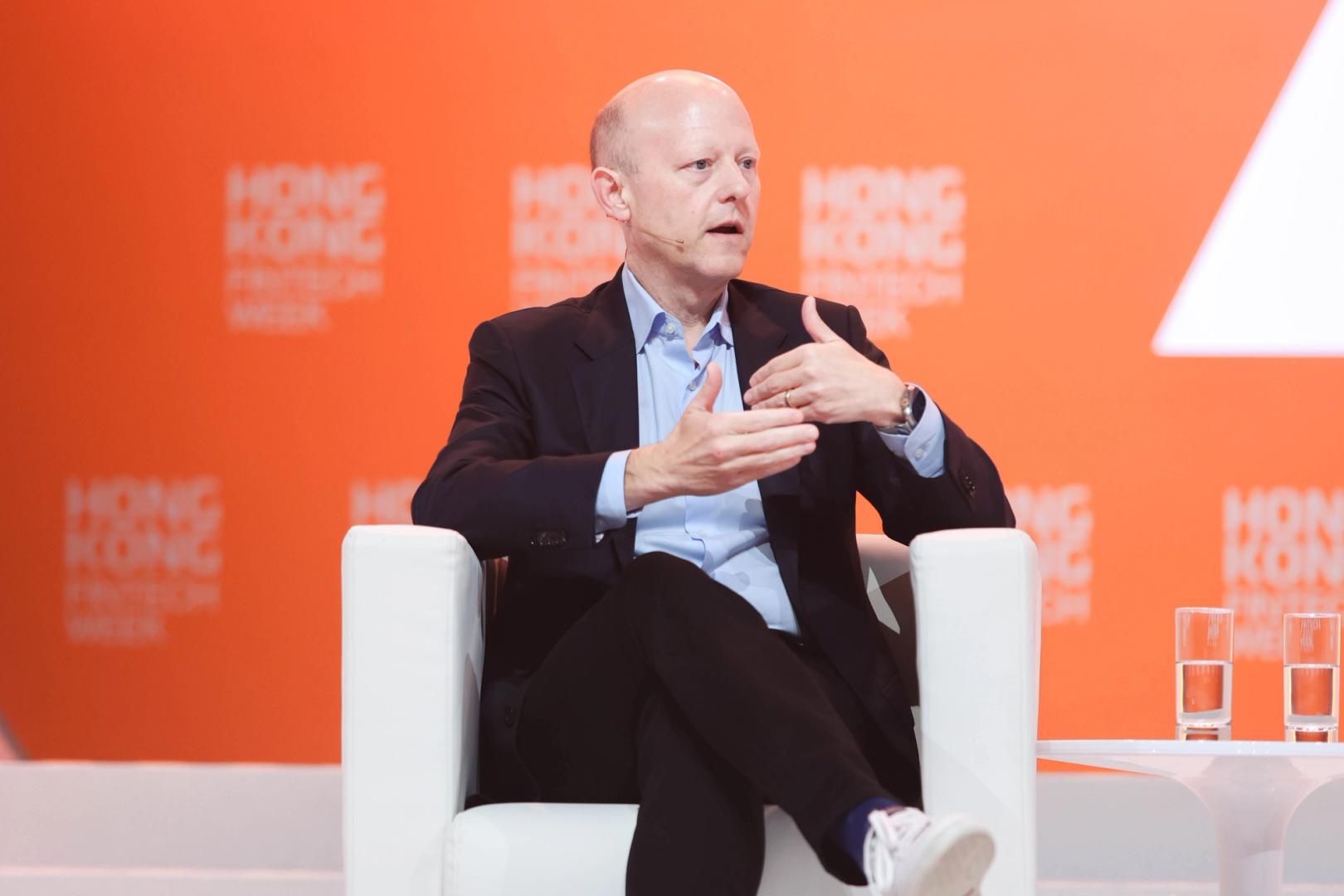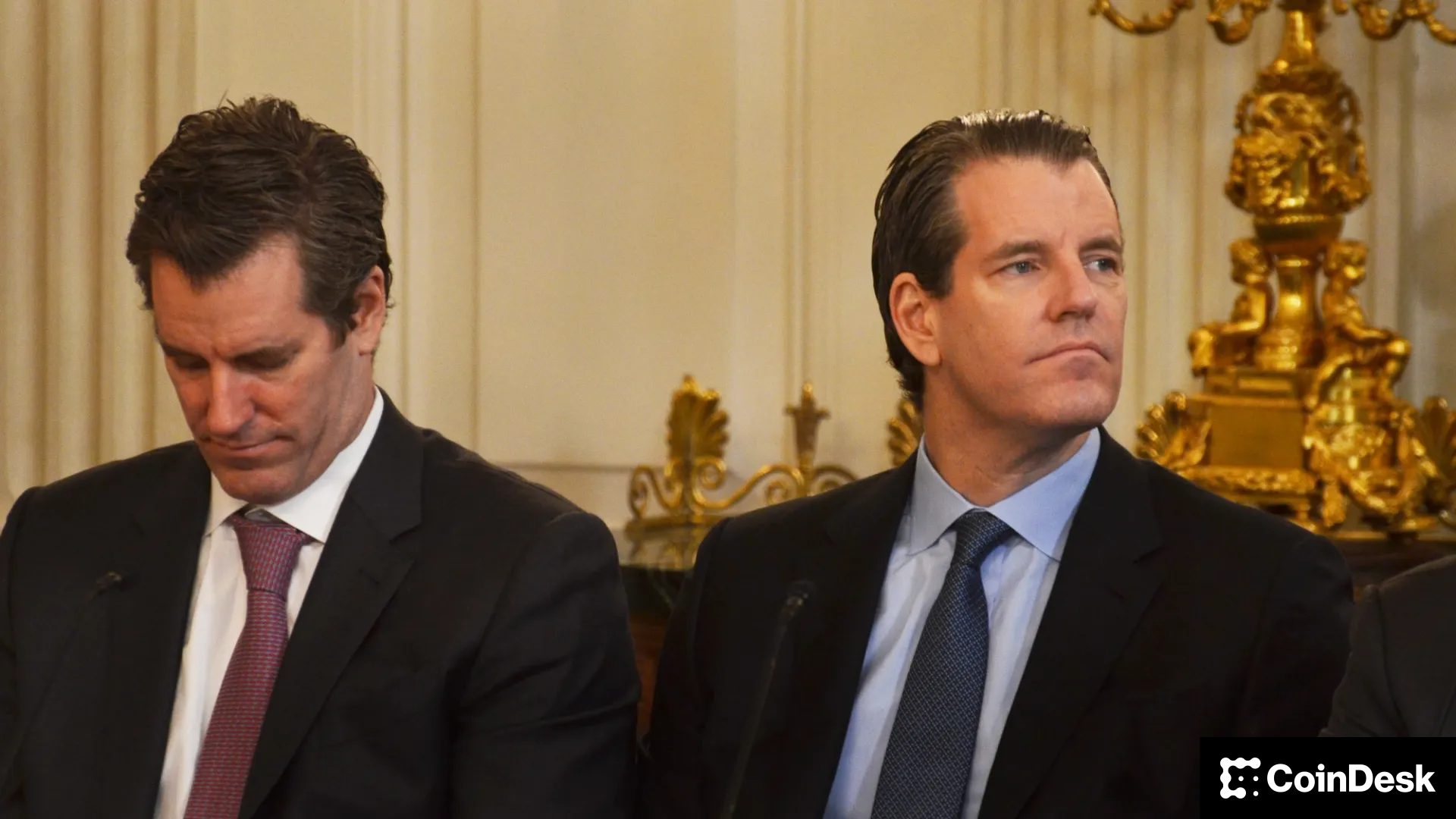Uncategorized
Asia Morning Briefing: Asia’s Banks Look to Stablecoins to Prevent Deposit Flight

Good Morning, Asia. Here’s what’s making news in the markets:
Welcome to Asia Morning Briefing, a daily summary of top stories during U.S. hours and an overview of market moves and analysis. For a detailed overview of U.S. markets, see CoinDesk’s Crypto Daybook Americas.
While stablecoins (USDT, USDC) dominated U.S. headlines last month amid the GENIUS Act and Circle’s (CRCL) blockbuster IPO, Asia’s quieter yet strategic adoption is reshaping the region’s cross-border finance.
Asian banks increasingly see stablecoins like USDT and USDC as defensive tools against deposit flight and lost transaction revenue. Behind the scenes, stablecoins are already playing an important role in the region’s financial plumbing.
Fireblocks’ Head of Asia, Amy Zhang, said in a recent interview with CoinDesk that major banks across Korea, Japan, and Hong Kong are proactively exploring local-currency stablecoins to mitigate these threats.
“If I’m not one of the banks banking Circle or banking Tether, am I going to lose deposits?” Zhang told CoinDesk. “That’s a huge risk for banks.”
In Korea, eight major banks, including KB Kookmin and Shinhan, are forming a consortium to launch a Korean won stablecoin by 2026, a direct response to surging local use of USDT and USDC for cross-border transactions.
Japan’s banking giants MUFG, SMBC, and Mizuho are piloting yen-pegged stablecoins to streamline trade finance and reduce dependence on traditional cross-border rails. Hong Kong’s Bank of East Asia also recently piloted its own USD and HKD stablecoin settlement network.
Payment service providers (PSPs) are aggressively fueling the adoption of stablecoins, shifting away from costly traditional banking channels.
«A year ago, PSPs were asking if they should do stablecoins,» Zhang said. «Now they say, ‘I’m moving a billion of client flows; I need a better wallet.'»
Fireblocks, which processed over $3 trillion in digital assets last year, reports that stablecoins now account for about half its transaction volume.
Zhang cited growing usage among Asian e-commerce giants.
Recent media reports say that China’s JD.com plans to cut supplier-payment costs dramatically using stablecoins, which is an example of what Zhang mentioned.
PSPs such as Hong Kong’s Tazapay use Circle’s USDC to efficiently route cross-border payments into USD and HKD disbursements to help with instant payouts for content creators and gamers in Asia’s emerging markets.
A dashboard from Visa Analytics shows that weekends have 30% higher stablecoin volumes, underscoring their role in retail and gig use.
Tether’s USDT dominates stablecoin flows in emerging Asian markets, driven by its liquidity and ease-of-access Zhang said, and by contrast, USDC gains traction in highly regulated financial hubs like Singapore and Hong Kong.
As the region’s financial institutions adopt stablecoins defensively and corporate users operationalize them pragmatically, Asia’s quiet transformation in cross-border finance infrastructure could become the next headline in stablecoin’s evolving history.
The question is, what will be the next IPO to capitalize on this?
Bakkt is Raising $1 Billion to Buy BTC
Bakkt Holdings (NYSE: BKKT) is preparing to join the growing ranks of public companies allocating capital to bitcoin, according to a filing with the Securities and Exchange Commission (SEC) on Thursday.
The SEC filing shows that Bakkt is looking to raise $1 billion through a mix of securities, common stock, preferred stock, debt, warrants, and units to buy BTC.
The move comes as corporate BTC treasury strategies gain momentum globally. Companies like Metaplanet in Japan, Bridge Biotherapeutics in Korea, and Semler Scientific in the U.S. have made headlines by adding BTC to their balance sheets.
The registration follows a wave of negative news: Bakkt recently lost two of its largest clients, Bank of America and Webull, responsible for a significant chunk of its loyalty and crypto service revenues.
In February of last year, the company warned that it might not be able to continue operations. A few months later, Trump Media was reportedly said to be looking into an acquisition, but since then, nothing has materialized.
Bakkt is also said to be exploring the potential sale or wind-down of its loyalty division as it refocuses on crypto payments and trading infrastructure.
Market Movements
- BTC: Bitcoin held steady above $107K Thursday ahead of a major $40B options expiry on Deribit, with a $102K max pain price and no clear directional bias from traders, while Core Scientific surged 33% on takeover rumors.
- ETH: Ethereum is trading at $2,420 as it tests major resistance between $2,500–$2,600, with analysts saying a breakout could pave the way to $2,800 or even $4,000 amid falling exchange reserves and record user activity.
- Gold: Gold slipped to $3,331 on Thursday despite a weaker dollar and falling Treasury yields, as strong U.S. jobless claims and durable goods data offset recessionary GDP revisions and added uncertainty over the Fed’s future leadership.
- Nikkei 225: Asia-Pacific markets are poised to rise Friday, tracking Wall Street gains after the White House downplayed concerns over upcoming tariff deals.
- S&P 500: The S&P 500 rose 0.8% Thursday, nearing a record high after a $9.8 trillion rebound from April lows, capping a 23% rally driven by easing tariff fears and renewed market optimism.
Elsewhere in Crypto
Business
Crypto Trading Firm Keyrock Buys Luxembourg’s Turing Capital in Asset Management Push

Crypto trading firm Keyrock said it’s expanding into asset and wealth management by acquiring Turing Capital, a Luxembourg-registered alternative investment fund manager.
The deal, announced on Tuesday, marks the launch of Keyrock’s Asset and Wealth Management division, a new business unit dedicated to institutional clients and private investors.
Keyrock, founded in Brussels, Belgium and best known for its work in market making, options and OTC trading, said it will fold Turing Capital’s investment strategies and Luxembourg fund management structure into its wider platform. The division will be led by Turing Capital co-founder Jorge Schnura, who joins Keyrock’s executive committee as president of the unit.
The company said the expansion will allow it to provide services across the full lifecycle of digital assets, from liquidity provision to long-term investment strategies. «In the near future, all assets will live onchain,» Schnura said, noting that the merger positions the group to capture opportunities as traditional financial products migrate to blockchain rails.
Keyrock has also applied for regulatory approval under the EU’s crypto framework MiCA through a filing with Liechtenstein’s financial regulator. If approved, the firm plans to offer portfolio management and advisory services, aiming to compete directly with traditional asset managers as well as crypto-native players.
«Today’s launch sets the stage for our longer-term ambition: bringing asset management on-chain in a way that truly meets institutional standards,» Keyrock CSO Juan David Mendieta said in a statement.
Read more: Stablecoin Payments Projected to Top $1T Annually by 2030, Market Maker Keyrock Says
Business
Crypto Trading Firm Keyrock Buys Luxembourg’s Turing Capital in Asset Management Push

Crypto trading firm Keyrock said it’s expanding into asset and wealth management by acquiring Turing Capital, a Luxembourg-registered alternative investment fund manager.
The deal, announced on Tuesday, marks the launch of Keyrock’s Asset and Wealth Management division, a new business unit dedicated to institutional clients and private investors.
Keyrock, founded in Brussels, Belgium and best known for its work in market making, options and OTC trading, said it will fold Turing Capital’s investment strategies and Luxembourg fund management structure into its wider platform. The division will be led by Turing Capital co-founder Jorge Schnura, who joins Keyrock’s executive committee as president of the unit.
The company said the expansion will allow it to provide services across the full lifecycle of digital assets, from liquidity provision to long-term investment strategies. «In the near future, all assets will live onchain,» Schnura said, noting that the merger positions the group to capture opportunities as traditional financial products migrate to blockchain rails.
Keyrock has also applied for regulatory approval under the EU’s crypto framework MiCA through a filing with Liechtenstein’s financial regulator. If approved, the firm plans to offer portfolio management and advisory services, aiming to compete directly with traditional asset managers as well as crypto-native players.
«Today’s launch sets the stage for our longer-term ambition: bringing asset management on-chain in a way that truly meets institutional standards,» Keyrock CSO Juan David Mendieta said in a statement.
Read more: Stablecoin Payments Projected to Top $1T Annually by 2030, Market Maker Keyrock Says
Business
Gemini Shares Slide 6%, Extending Post-IPO Slump to 24%

Gemini Space Station (GEMI), the crypto exchange founded by Cameron and Tyler Winklevoss, has seen its shares tumble by more than 20% since listing on the Nasdaq last Friday.
The stock is down around 6% on Tuesday, trading at $30.42, and has dropped nearly 24% over the past week. The sharp decline follows an initial surge after the company raised $425 million in its IPO, pricing shares at $28 and valuing the firm at $3.3 billion before trading began.
On its first day, GEMI spiked to $45.89 before closing at $32 — a 14% premium to its offer price. But since hitting that high, shares have plunged more than 34%, erasing most of the early enthusiasm from public market investors.
The broader crypto equity market has remained more stable. Coinbase (COIN), the largest U.S. crypto exchange, is flat over the past week. Robinhood (HOOD), which derives part of its revenue from crypto, is down 3%. Token issuer Circle (CRCL), on the other hand, is up 13% over the same period.
Part of the pressure on Gemini’s stock may stem from its financials. The company posted a $283 million net loss in the first half of 2025, following a $159 million loss in all of 2024. Despite raising fresh capital, the numbers suggest the business is still far from turning a profit.
Compass Point analyst Ed Engel noted that GEMI is currently trading at 26 times its annualized first-half revenue. That multiple — often used to gauge whether a stock is expensive — means investors are paying 26 dollars for every dollar the company is expected to generate in sales this year. For a loss-making company in a volatile sector, that’s a steep price, and could be fueling investor skepticism.
-

 Business11 месяцев ago
Business11 месяцев ago3 Ways to make your business presentation more relatable
-

 Fashion11 месяцев ago
Fashion11 месяцев agoAccording to Dior Couture, this taboo fashion accessory is back
-

 Entertainment11 месяцев ago
Entertainment11 месяцев ago10 Artists who retired from music and made a comeback
-

 Entertainment11 месяцев ago
Entertainment11 месяцев ago\’Better Call Saul\’ has been renewed for a fourth season
-

 Entertainment11 месяцев ago
Entertainment11 месяцев agoNew Season 8 Walking Dead trailer flashes forward in time
-

 Business11 месяцев ago
Business11 месяцев ago15 Habits that could be hurting your business relationships
-

 Entertainment11 месяцев ago
Entertainment11 месяцев agoMeet Superman\’s grandfather in new trailer for Krypton
-

 Entertainment11 месяцев ago
Entertainment11 месяцев agoDisney\’s live-action Aladdin finally finds its stars




